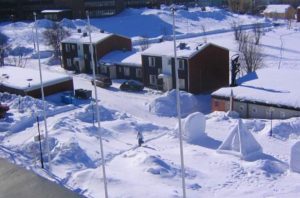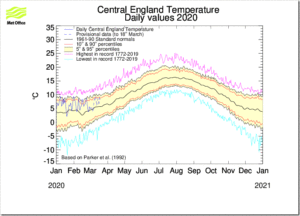by Cap Allon, March 19, 2020 in Electroverse
The first flakes of the season in Kiruna, Sweden fell back on Sept 30 and from then on have continued relentlessly, with accumulations now comfortably surpassing the region’s all-time snowfall record.
…

The cold times are returning in line with historically low solar activity, cloud-nucleating Cosmic Rays, and a meridional jet stream flow.
NASA has recently revealed this upcoming solar cycle (25) will be “the weakest of the past 200 years,” with the agency correlating previous solar shutdowns to prolonged periods of global cooling here.

https://globalcryospherewatch.org/
…
by R.G. Andrews, March 19, 2020 in NationalGeographic
An injection of magma under Norris Geyser Basin may be why the region is five inches higher today than it was 20 years ago.
In northwestern Wyoming, in the center of Yellowstone National Park, a bubbling caldera is the scar of a 640,000-year-old, gargantuan volcanic eruption. The 3,472-square-mile park encompassing the caldera is filled with geologic wonderlands of sprouting geysers and effervescing pools, all ultimately driven by magma and superheated fluids churning in the rock below the surface.
One of these areas, Norris Geyser Basin to the northwest of the caldera, contains more than 500 hydrothermal features. These tempestuous geysers and pools often change from day to day, but a much larger transformation has been taking place as well: For more than two decades, an area larger than Chicago centered near the basin has been inflating and deflating by several inches in erratic bursts. In a hyperactive volcanic region like Yellowstone, the exact causes of any specific movement are difficult to pin down. But a recent study in the Journal of Geophysical Research: Solid Earth may help explain why this pocket of land has been breathing in and out.
“In all likelihood, Norris has been a center of deformation for a very long time,” says Daniel Dzurisin, a research geologist at the U.S. Geological Survey’s Cascades Volcano Observatory and one of the co-authors of the new research.

Norris Geyser Basin, Yellowstone National Park, Wyoming.
PHOTOGRAPH BY MARC MORITSCH, NAT GEO IMAGE COLLECTION
…
by P. Homewood, March 19, in NotaLotofPeopleKnowThat
If you had not noticed (!), it has been a mild and wet start to the year here in the UK, and also across in NW Europe.
No doubt this will be linked to global warming in due course, but in fact it is simply weather, as the CET chart below proves:

Since the year started, temperatures have consistently been within the normal band. In other the sort of temperatures commonly seen at this time of year.
However, they have also been consistently in the top half of that band, rather than being spread between cold and warm, as would happen most years.
The reason for the weather we have had is, of course, the jet stream, or more precisely the North Atlantic Oscillation (NAO), which has been strongly and stubbornly positive all winter.
The Norwegian Centre for Climate Research CICERO spotted this mild weather coming back in December, and commented on 6th January:
The unusual warm temperatures this winter and forecasts indicating milder winter conditions for January, February and March in Europe are partly due to an atmospheric circulation pattern called the North Atlantic Oscillation, or NAO. This atmospheric circulation pattern explains well the weather we get in Europe, especially in winter.
https://cicero.oslo.no/no/posts/nyheter/unseasonal-temperatures-for-norway#
Our own Met Office explains the NAO phenomenon:
…
La géologie, une science plus que passionnante … et diverse

![]()


